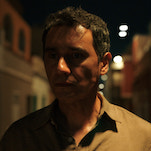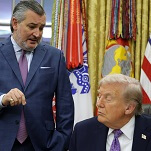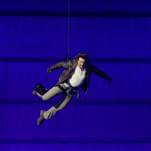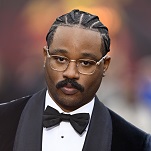With Together Again, Jesse Hassenger looks at actors and directors who have worked together on at least three films, analyzing the nature of their collaborations.
Who among us hasn’t feared being thrown aside for Leonardo DiCaprio? That may not have been precisely or exclusively what happened circa 1998 when director Danny Boyle cast the most sought-after star in the world in his adaptation of the Alex Garland novel The Beach. But that’s how it felt to Ewan McGregor, whose three-movie streak of starring in Boyle’s films came to an abrupt end, along with the pair’s friendship and ongoing collaboration.
Was it really that big a deal to be passed over for DiCaprio? Well, besides that Boyle has since admitted to handling the situation poorly, at the time The Beach went into production, McGregor had shot his role as Obi-Wan Kenobi in the first installment of a new Star Wars trilogy, but the film hadn’t yet come out. It seemed, however briefly, like his scrappy buddy Danny Boyle had gone on to bigger and better things without him.
A few years later, McGregor was a bigger name post-Star Wars, while Boyle was in the doghouse following the relative failure of The Beach. But at the time, Boyle really did move on to something bigger: Leo, at the peak of Leo-mania. As Titanic continued its yearlong run at the box office, his only major role follow-up (The Man In The Iron Mask, shot before the James Cameron epic) came, made a tidy profit, and went; he had nothing else in the queue behind it save the obligatory bit part in a Woody Allen movie. (It was a different time.) DiCaprio’s selection of a next film was a potentially king-making move. McGregor, on the other hand, charismatic as he obviously was, had played for Boyle a series of questionably coiffed losers.
That’s particularly true of the movie McGregor and Boyle put into theaters just a couple of months before Titanic, which was also a Fox-released romance about a rich girl, played by a mid-’90s discovery, getting tangled up in jeopardy with a lower-class boy. And that is where the resemblance between Titanic and A Life Less Ordinary comes to its own abrupt end. (Although, doesn’t the section of Titanic where a murderously crazed Billy Zane chases the star-crossed couple around a sinking ship vaguely recall the blood-simple climaxes of multiple Boyle movies?) It’s hard not to imagine that a hit A Life Less Ordinary plus Star Wars might have made McGregor a big enough name to make The Beach with Boyle.
Then again, it’s hard to imagine A Life Less Ordinary ever becoming a hit (unless, maybe, it starred DiCaprio). Boyle’s third film was supposed to be a clarifying and defining moment for the hot young director, just as Do The Right Thing crystallized Spike Lee’s career, and Miller’s Crossing encapsulated the Coen Brothers. At least, that’s what a Premiere magazine cover story put out there back in the fall of ’97, in the kind of hype that in retrospect seems downright delusional. At the same time, the Coens comparison is as accidentally instructive as the Lee comparison is nonsensical: It is a touch easier to understand the lunacy of A Life Less Ordinary in terms of a British director trying to imitate Raising Arizona, which is at least more novel than the many Americans who were then laboring to knock off Pulp Fiction. Still, even fans of A Life Less Ordinary must admit that it is a uniquely strange and sometimes off-putting experience.
McGregor is right at the center of that strangeness, instantly empathetic while also threatening to do a little too much. He plays Robert, a humble janitor with aspirations of writing a “trash novel” about the secret child of Marilyn Monroe and JFK, his self-consciousness about his low aims just one of many cutesy touches from Boyle and screenwriter John Hodge. When Robert’s life falls apart and he loses his job to a robot, he storms into his employer’s corporate offices and kidnaps the man’s spoiled daughter Celine (Cameron Diaz), who is initially (and characteristically) irritated but quickly calculates that this situation can be used to her advantage. Little does Robert know that these unenviable circumstances are the result of interfering angels (Delroy Lindo and Holly Hunter) who have been told to facilitate Robert and Celine falling in love; little do the angels realize just how volatile Robert and Celine will turn out to be.
The bones of A Life Less Ordinary are classic screwball: Heiress, bumbler, zany deceptions, sniping that turns to affection; even the whimsical angel subplot feels like it could come out of a comedy from 1942. But with Coens-style comic violence and oddball interludes, as well as vaguely awestruck American location shooting from Boyle’s core team of Brits, it’s never quite as straightforward as a great screwball movie. Everyone in this movie, in front of and behind the camera, is overdoing it: Diaz comes across hostile rather than witty, McGregor seems more dim than a true straight arrow, and Boyle keeps shooting for the moon rather than reining anyone in. Yet both stars do sparkle, in their way; her bluntness colliding with the musicality of his Scottish accent is irresistible. McGregor even gets to flash some of his future smoothie charisma in a fantasy song-and-dance number where he croons “Beyond The Sea” and dances with Diaz on a bar; it’s proto-Moulin Rouge! with a splash of Down With Love, and Boyle got that out of him first. It remains a shame that Boyle, who seems to instinctively understand how to turbocharge cinema with pop music, has not yet made a proper musical.
Instead, Boyle is left to zero in on the magic of his soundtrack picks, at one point sending his stars careening through the woods to the wailing, siren-like riff of R.E.M.’s “Leave.” (He would later send DiCaprio pinging through the jungle, imagining himself as a video game character scored to a remix of Blur’s “On Your Own.”) Together, Boyle and McGregor create the impression of a man truly unmoored by the fates, whooshed along by Boyle’s ostentatious camerawork and well-chosen soundtrack cuts. McGregor is also very funny in the movie, especially when he’s visibly reacting a half-beat too late to some sort of screwball deception or delusion. Watch his bearing shift when he realizes that Celine is describing him to nosy locals as a famous pop star in hiding and he makes a belated, visible attempt to affect a sense of mystique.
For all of the obtuseness of its fantastical rules and exuberance of its filmmaking, A Life Less Ordinary rejects mystique, laying out Robert’s earnestness to a degree that audiences might have found uncomfortable. Even someone who, say, saw the movie twice in theaters might cringe a little upon hearing McGregor—so brash in his previous Boyle films—made to describe himself as a “dreamer.” That Robert is meant to ultimately come across as overtly lovable represented a major change of pace, given that their first movie together, the black-comic thriller Shallow Grave, goes out of its way to position McGregor and his costars as self-interested connivers.
It’s a particularly pitch-black joke that Alex, McGregor’s character in Shallow Grave, is a journalist at one point shown chastising a potential subject for not containing enough “human interest.” Among the trio of smug flatmates who treat the search for a new boarder as a snarky prank show aimed only at themselves, Alex is the one who most obviously relishes his inhumanity with insults, invasions of privacy, and casual cruelty. In his first leading role, McGregor has fun playing all this in a particularly bratty tone—though like all the characters in the movie, he’s more of a construct than a full-bodied person.
Alex in particular exists as a feint; he’s meant to seem like the most obviously amoral of the group, the one pushing them not to report the death of their eventual fourth flatmate so they can get rid of the body and keep the large sum of money he’s left behind, only to find that the seemingly more straitlaced David (Christopher Eccleston) is the real paranoid sicko. It’s a little preview of McGregor’s later career; even if Alex never really turns into a full leading man, the movie is savvy (if schematic) in its revelation that beneath his antisocial exterior there exists a guy who isn’t quite as ruthless as his two horrible friends.
The hectoring jerk of Shallow Grave and the sweetly charismatic dupe of A Life Less Ordinary are balanced out with McGregor’s performance in Trainspotting, where he plays a charismatic and likable drug addict who is, objectively speaking and in his own final-narration analysis, a bad person. Mark Renton lets down his family, gets his lifelong friend hooked on heroin, accidentally commits statutory rape, and, in his great moment of triumph, steals a petty yet substantial amount of money from his three remaining friends. It is also, notably, McGregor’s most successful approximation of an everyman outside of…well, we’ll get to that momentarily. Most of his best non-Boyle performances have some heightened element, whether it’s Obi-Wan’s charming aloofness (and vocal resemblance to Alec Guinness), the explosive passion of Christian from Moulin Rouge!, the sliminess of the handler in Haywire, or the gentility of his characters in Beginners or I Love You Phillip Morris. His most anonymous work comes when he flattens himself (and his accent) out to play an American as in The Men Who Stare At Goats or August: Osage County.
As Renton, McGregor has a posture that’s either coiled or slightly hunched; a youthful way of standing, of bumming around. There’s a bit of that stance in A Life Less Ordinary, too, but in Trainspotting, he looks truly dewy—or slicked with junkie sweat. Regardless, Renton registers as the everyman figure in his addict friend group, not because of some innate decency, but by default. He’s not psychotically violent like Begbie, not as hapless as Spud, and somewhat less chilly than Sick Boy. He stands back, leans into his addiction when it’s convenient, repeatedly escapes trouble like a true main character, and flashes the nascent version of a pop-star smile. (Or, as Sick Boy later describes it in the sequel, a “smug little cunty grin.”) He’s perfect for Boyle’s music-video sensibility, which somehow feels more steeped in pop-music history than other practitioners of this style, maybe because Boyle didn’t actually come up in music videos. His short, punchy scenes and show-off camera angles are more precise than pure visual chaos, finding room for multiple visual Beatles references (A Hard Day’s Night at the front, Abbey Road towards the end). It’s like a steady stream of constantly subliminal hints that McGregor should embrace his musicality—or that Renton, however subliminally, sees himself that way.
Heroes’ pop-addled self-image is a recurring motif for Boyle, hence that gamer sequence in The Beach, a whole movie about a young man trying to reconcile his culturally addled self-image with some elusive greater authenticity. DiCaprio does have some qualities in common with McGregor, and it’s easy enough to picture him in the American equivalent of a movie like Trainspotting (The Basketball Diaries is also a stylized heroin story), just as it’s easy to picture McGregor playing the eager Beach backpacker. Then again, the three years of youth that DiCaprio has on his non-rival aren’t nothing in a movie about feckless young adults. Regardless, Boyle’s dalliance with DiCaprio did not lead to a lifelong collaboration, though The Beach was less of a box office flop than it’s often described as. (It’s a semi-trippy drama about squabbling commune members, and globally it made roughly the equivalent of $250 million today.) But it was actually DiCaprio’s next big movie, Gangs Of New York, which kicked off the defining creative relationship of his career.
The long-term Boyle collaboration that actually emerged from The Beach was with Garland, who did not adapt his own novel, but wound up writing two more movies for Boyle: 28 Days Later and Sunshine, both starring Cillian Murphy—who feels far more like a McGregor replacement than DiCaprio did, despite affecting a decidedly different energy. It’s not that Murphy is necessarily more sincere or subtle than McGregor, tempting as it may be to characterize him that way, and he’s certainly capable of his own showmanship. (Both men had a lot of fun playing Gotham City villains.) But Murphy has a slightly eerie, otherworldly quality to his frequent stillness; McGregor can also play in a quieter or more melancholic register (see Young Adam or Salmon Fishing In The Yemen) but rarely seems as haunted.
In fact, when McGregor did reunite with Boyle again, to play a mid-40s Mark Renton who returns home to Edinburgh haunted by his mistakes and malaise, he used his earlier breakout performance to go deeper into everyman mode, exploring what happens when your brash young main character grows into just another middle-class wanker.
It’s almost too tidy that Boyle and McGregor would bury the hatchet for a Trainspotting legacy sequel, halfway between the 20th anniversaries of the original film and A Life Less Ordinary. T2 Trainspotting rejects some of that tidiness by pulling back from Renton’s head. In the first film, most of the scenes are either from Renton’s point of view, or specifically narrated as a story within the story, being told by or to Renton, with the exception of some sex-related cross-cutting. The sequel gives nearly equal time to all four blokes, regardless of whether Renton is in the room. (Fun fact: The first-billed actor in the opening credits is Ewen Bremner. Well done, Spud.) His narration only pipes in to provide historical context in a few key scenes. The secret recessiveness of McGregor in the first movie, where he’s a less ostentatious character than any of his friends yet too youthfully antsy to fully contain himself, becomes something more genuinely mellow here—except when he rides the high of ripping people off with Sick Boy again. For this sequence, McGregor and Jonny Lee Miller, playing their characters falling back into long-forgotten rhythms, fill in convincing details of their friendship that by design weren’t there in the original. It’s the rare decades-later revisitation that recaptures, even enhances, the youthful vitality of the original film while fully acknowledging the characters’ quieter, sadder day-to-day. Renton still provides a default stability to his fractured friend group; McGregor makes it clear how the meaning of that role has shifted in time.
As for Boyle, he still shows off in T2—there’s a microphone-eye-view shot, images projected on moving cars, a dreamlike displacement of the characters to reflect their mental states—while using other images to evoke the not-particularly-hip act of flipping through an old photo album. There are momentary freeze frames of McGregor and the other actors; retconned “old” footage of Renton and Sick Boy as children; and plenty of micro-clips imported from the original Trainspotting. The latter might seem like a cheap, dodgy play for nostalgia. But really, it calls back to Boyle’s early style as much as the work itself; Trainspotting repeats some of its own footage, and A Life Less Ordinary includes a shameless montage of clips from itself in its final scene. T2 only makes the technique more actively recursive. This culminates in a final scene where a sober Renton returns to his childhood bedroom, finally puts on his Iggy Pop record (notably playing a remix of “Lust For Life,” guaranteeing that the song will sound different from our memories of the original), and Boyle juxtaposes a shot of his younger self, iconically drooping in heroic-induced ecstasy, with present-day McGregor in a similar pose as he starts dancing to the music of his youth. It’s both electrifying and elegiac.
Was it worth a 20-year gap for T2 to end so perfectly? Well, human relationships should probably be prioritized over a great movie moment. Yet T2 does make the estrangement between McGregor and Boyle seem more natural in retrospect, at least as far as their on-screen collaborations go. As great as it might have been to find parts for McGregor in Boyle’s other films—it’s especially easy to picture him playing the dad in Millions—their work together courses with such plugged-in energy, for better and worse, that the separation might have helped them both grow. Neither of them dropped their most distinctively youthful qualities to facilitate this growth. If anything, they further capitalized on them: Moulin Rouge! explodes from the awkward phantasmagoria of A Life Less Ordinary, and Millions retells a Shallow Grave story with greater wisdom and curiosity about humanity. After all, you can gain distance from your youth, but as long as you’re still living, it’s back there somewhere. Even if Boyle and McGregor do reunite again in the future, T2 still feels like a one-off, and a statement of the obvious: Making movies separately, even refusing to speak, couldn’t keep them apart.
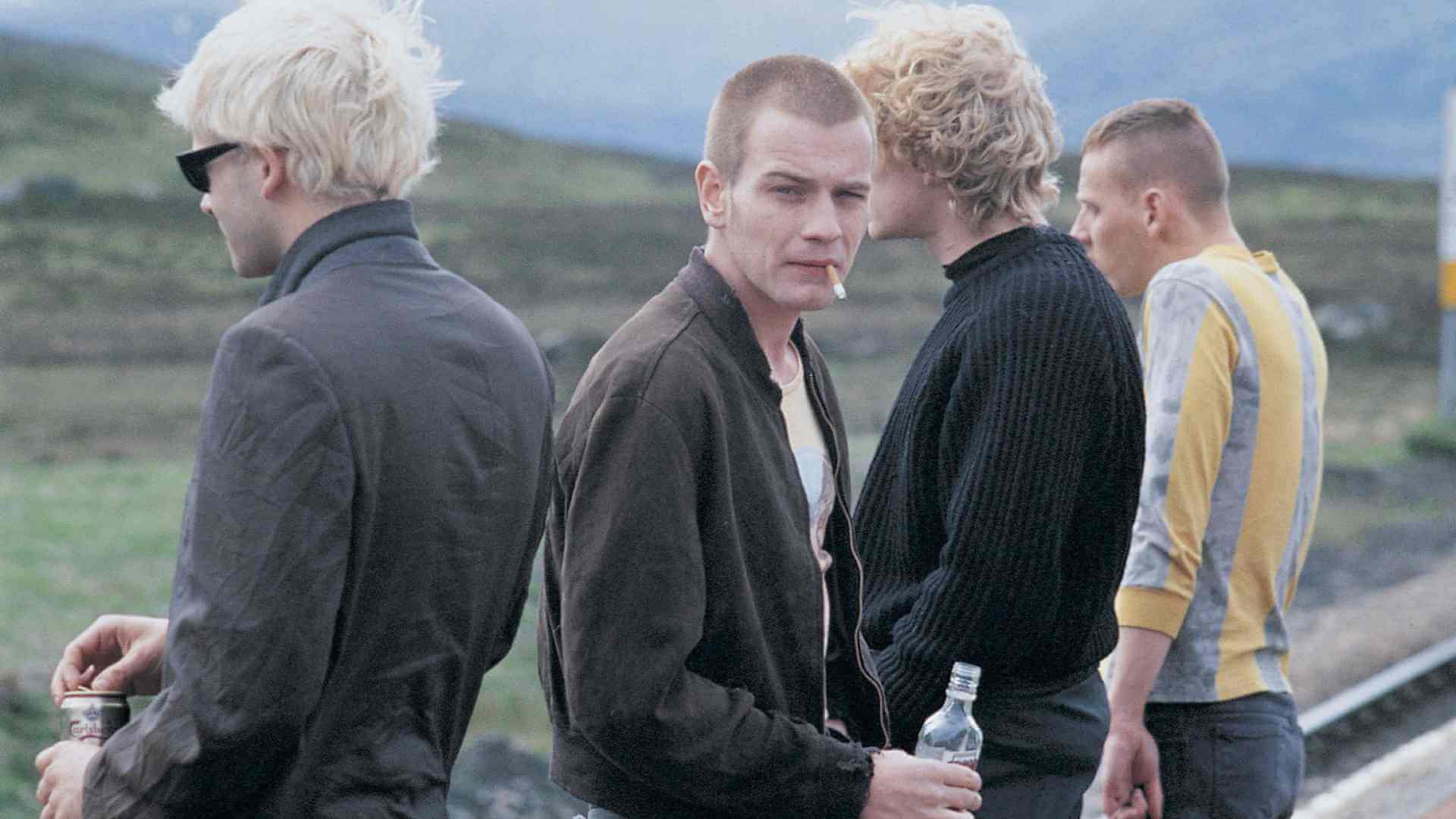



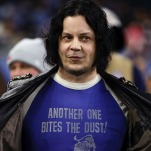

![Rob Reiner's son booked for murder amid homicide investigation [Updated]](https://img.pastemagazine.com/wp-content/avuploads/2025/12/15131025/MixCollage-15-Dec-2025-01-10-PM-9121.jpg)
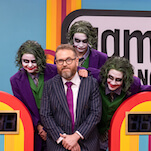
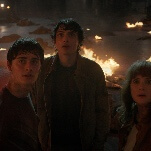
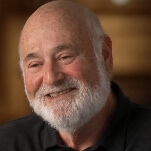



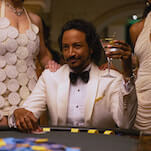

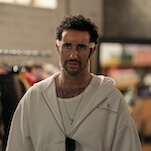
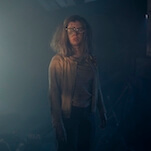


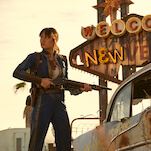
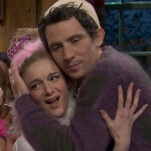

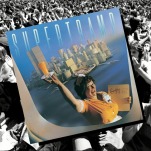



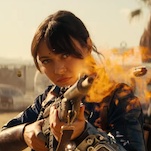

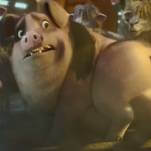

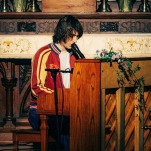

![HBO teases new Euphoria, Larry David, and much more in 2026 sizzle reel [Updated]](https://img.pastemagazine.com/wp-content/avuploads/2025/12/12100344/MixCollage-12-Dec-2025-09-56-AM-9137.jpg)



